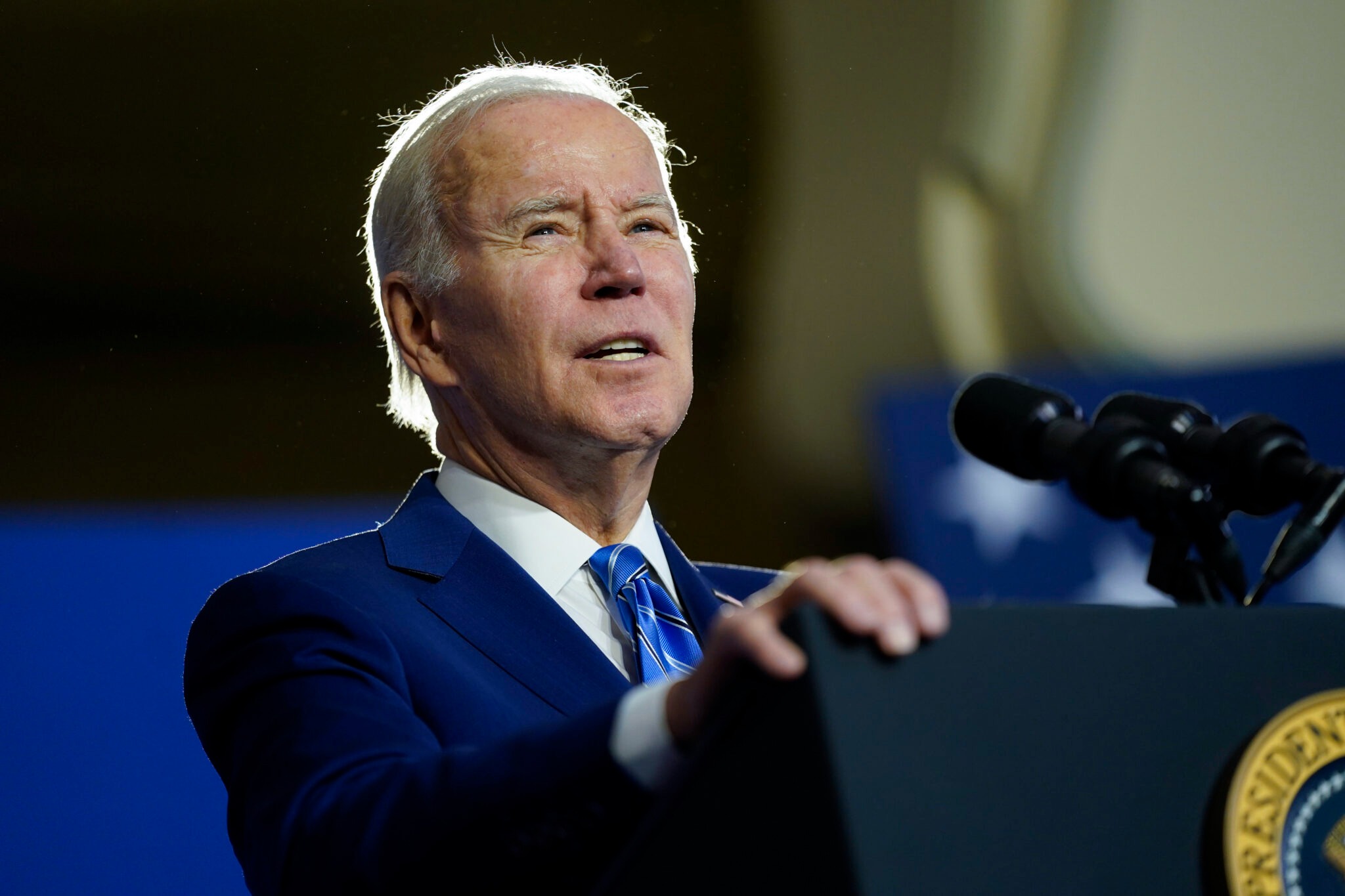CNN reports that with just days left before its self-imposed mid-March deadline to finalize plans for a third-party presidential ticket, No Labels finds itself without a candidate or a clear strategy.
Despite this, the organization is gearing up to critique President Joe Biden, acknowledging that their attacks may be potent but not entirely accurate.
Potential candidates are also holding back. Sources familiar with the matter revealed that although No Labels has engaged in discussions with advisers to Chris Christie, the former New Jersey governor himself has declined to meet with them.

Biden (Credits: Bloomberg.com)
No Labels officials admit that they have yet to establish a specific date for making a decision, and they have deliberately avoided outlining their decision-making process.
The uncertainty surrounding No Labels’ presidential ticket plans underscores the challenges facing third-party movements in the current political landscape. With the two-party system dominating American politics, establishing a viable alternative poses significant hurdles.
For No Labels, finding a candidate who aligns with their centrist principles while also having the credibility and appeal to mount a serious challenge to the major parties is proving to be a daunting task.
Additionally, crafting a cohesive platform and garnering sufficient support and resources to mount a credible campaign are critical challenges that remain unresolved.
The reluctance of potential recruits like Chris Christie to engage with No Labels highlights the skepticism and caution that many politicians have towards third-party movements.
Despite dissatisfaction with the current political climate and a desire for alternatives, many are wary of the practical challenges and potential risks associated with breaking away from the established party structure.
As No Labels continues to grapple with these challenges, the clock is ticking towards their self-imposed deadline. Whether they will be able to overcome the obstacles and emerge as a viable alternative to the major parties remains to be seen.
However, their struggle reflects broader dynamics within American politics, where the dominance of the two-party system presents significant barriers to third-party efforts seeking to disrupt the status quo.























